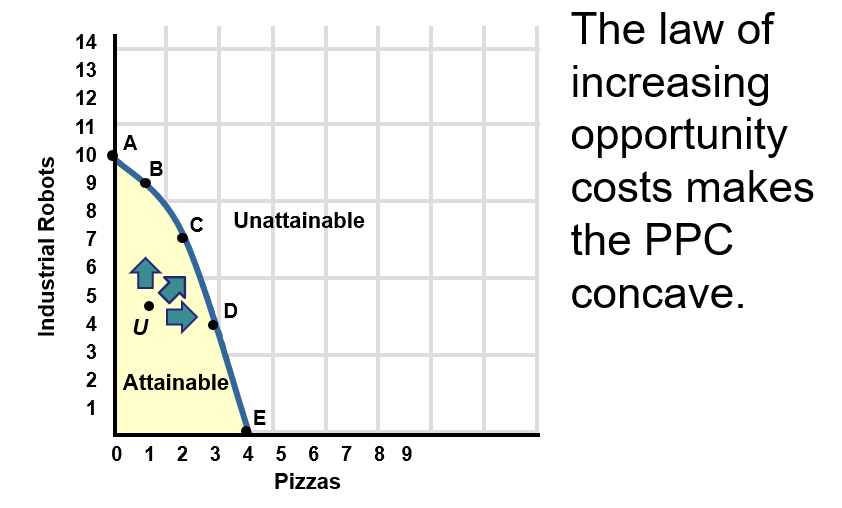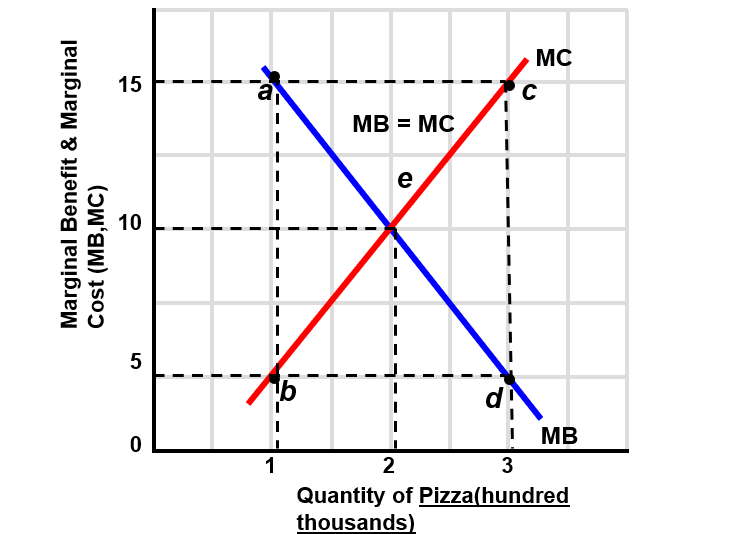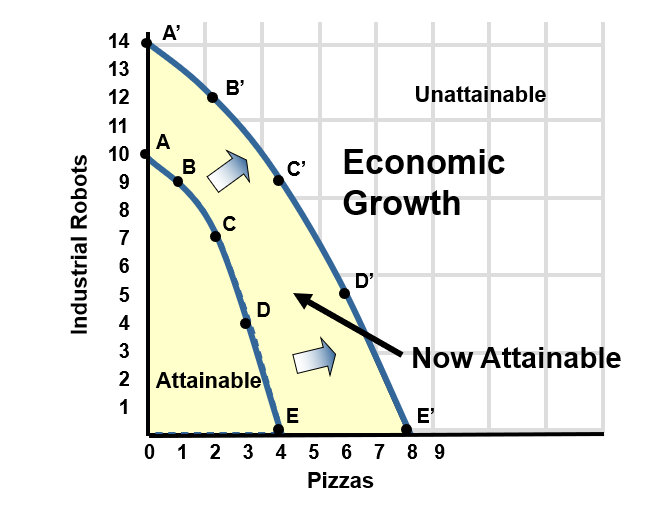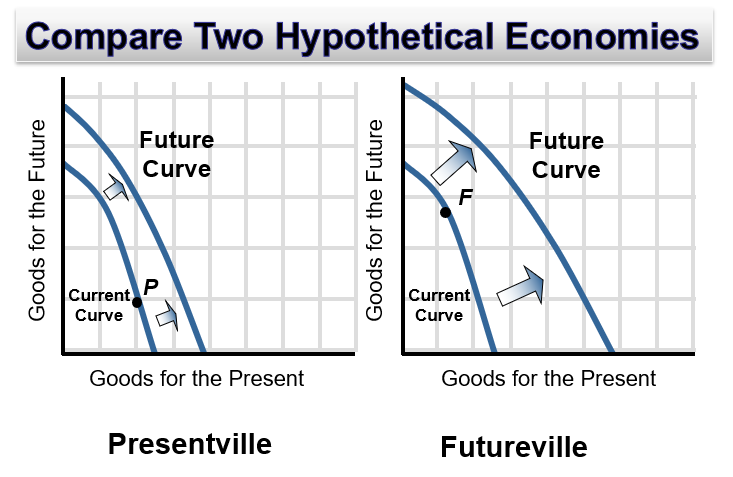Chapter 1
Introduction to Economics
Economics is a social science that investigates how individuals and societies make “optimal choices” under conditions of scarcity.
Core insight: Economic wants exceed productive capacity; therefore, every society must confront trade-offs.
The Economic Perspective
Key Features
Scarcity & Choice – Resources are limited; selecting one option means giving up another.
Rational Self-Interest – Decision-makers pursue the option that maximizes their satisfaction (utility for individuals, profit for firms).
Marginal Analysis – Decisions are made by comparing marginal benefit (MB) with marginal cost (MC); action is taken up to the point where MB = MC.
Scarcity and Choice
Resources are scarce, hence:
Choices are unavoidable.
Opportunity cost =\, value of the next-best alternative forgone.
"There’s no free lunch" – every decision incurs opportunity cost even if money is not exchanged.
Purposeful (Rational) Behavior
Individuals: aim to maximize utility.
Firms: aim to maximize profit.
Decision-makers weigh benefits & costs to reach preferred (desired) outcomes.
Marginal Analysis in Depth
Marginal means “extra” or “additional.”
Core rule: undertake an action when MB \ge MC; stop when MB = MC.
Helps allocate scarce time, money, or other resources efficiently.
Economic Methodology
Scientific Method
Observe real-world behavior & outcomes.
Formulate a hypothesis.
Test the hypothesis with data.
Accept, reject, or modify the hypothesis.
Continue testing as necessary for greater accuracy.
Theories, Principles, & Models
Economic principles = statements about economic behavior that enable prediction.
Feature generalizations (typical tendencies of groups, not individuals).
Employ the “other-things-equal” (ceteris paribus) assumption to isolate effects.
Conclusions are often expressed graphically for clarity.
Microeconomics vs. Macroeconomics
Field | Focus | Typical Questions |
|---|---|---|
Microeconomics | Decision-making by individual units (consumers, firms, industries) | "How will a rise in gasoline prices affect SUV sales?" |
Macroeconomics | Aggregate economy (inflation, unemployment, GDP) | "What causes recessions? How can growth be accelerated?" |
Positive vs. Normative Economics
Positive Economics: deals with facts and cause-and-effect relationships; statements are testable.
Normative Economics: incorporates value judgments about what the economy should be; statements are subjective.
The Individual’s Economizing Problem
Limited Income, Unlimited Wants
Individuals face finite \text{income} but virtually infinite \text{wants}.
The constraint is illustrated by a budget line (or budget constraint).
Budget-Line Illustration (Books vs. DVDs)
Income: \$120.
Price of a DVD: \$20 \Rightarrow max DVDs = 6.
Price of a paperback book: \$10 \Rightarrow max books = 12.
Any bundle on or below the line is attainable; any bundle above is unattainable.
A change in income shifts the entire budget line outward (higher income) or inward (lower income).
Trade-Offs & Opportunity Costs
Moving along the budget line shows how acquiring more of one good requires giving up some of the other.
Global Perspective: Per-Capita Income (2008)
Country | Income (US$) |
|---|---|
Switzerland | 65\,330 |
United States | 47\,580 |
France | 42\,250 |
Japan | 38\,210 |
South Korea | 21\,530 |
Mexico | 9\,980 |
Brazil | 7\,350 |
China | 2\,770 |
Nigeria | 1\,160 |
India | 1\,070 |
Rwanda | 410 |
Liberia | 170 |
Highlights huge international disparities in purchasing power and living standards.
Society’s Economizing Problem
Scarce Resources (Factors of Production)
Land – natural resources.
Labor – physical & mental talents of humans.
Capital – manufactured aids to production (machinery, tools); NOT the same as money.
Entrepreneurial Ability – special human resource that:
Takes initiative
Makes strategic decisions
Innovates new products/processes
Bears risk of business failure
Production Possibilities Model
Assumptions
Full employment of resources.
Fixed quantity & quality of resources.
Fixed technology.
Economy produces two goods (simplification).
Production Possibilities Table
Alternative | Pizzas (hundred-thousands) | Industrial Robots (thousands) |
|---|---|---|
A | 10 | 0 |
B | 9 | 1 |
C | 7 | 2 |
D | 4 | 3 |
E | 0 | 4 |
Plotting these pairs yields the Production Possibilities Curve (PPC), concave to the origin due to the Law of Increasing Opportunity Costs.
Law of Increasing Opportunity Costs
As production of good X increases, the opportunity cost of each additional unit (in terms of forgone units of Y) rises because resources are not perfectly adaptable between uses.

Attainable vs. Unattainable Points
Any point on or inside the PPC is attainable (though inside implies unemployment/inefficiency).
Points outside the PPC are currently unattainable.
Optimal Allocation
Combine the MB and MC schedules:
Quantity of Pizza (\times 100{,}000)
MB
MC
0
15
0
1
10
?
2
5
?
The optimal quantity is where MB = MC (exact numerical MC values implied by the PPC slope).

Economic Growth: Shifting the PPC Outward
Causes:
More resources (land, labor, capital).
Improved resource quality (education, health, skills).
Technological advances (better production methods).
Growth allows the economy to move from points A, B, C, D, E to A', B', C', D', E' — previously unattainable bundles become feasible.
Revised Production Alternatives After Growth

Alternative
Pizzas (hundred-thousands)
Industrial Robots (thousands)
A'
14
0
B'
12
2
C'
9
4
D'
5
6
E'
0
8
Present Choices & Future Possibilities
Economy that devotes more resources to “goods for the future” (capital goods, R&D, education) grows faster than one focused on present consumption.
Diagrammatically, Futureville chooses a point with high future goods, shifting its PPC outward more rapidly than Presentville.

International Trade & Specialization
By specializing in goods for which it has a comparative advantage and trading for others, a nation can consume beyond its domestic PPC.
Trade is therefore an alternative route to higher standards of living without waiting for internal economic growth.
Comprehensive Summary
Scarcity forces individuals and societies to confront the economizing problem.
Choices are guided by rational comparisons of marginal benefits and marginal costs.
Analytical tools (budget lines, PPCs) illustrate trade-offs, opportunity costs, efficiency, and growth.
Long-run living standards depend on resource allocation between present consumption and future-oriented investment, as well as on openness to specialization and trade.
Policymakers face three broad options to mitigate scarcity:
Economic Growth (expand resource base & technology).
Improve resource use (raise productive & allocative efficiency).
Curb excessive wants (equity considerations, cultural change).
These notes encapsulate every major and minor concept presented, along with numerical illustrations, methodological foundations, and real-world implications. They can serve as a standalone study guide for understanding the limits, alternatives, and choices central to economic reasoning.